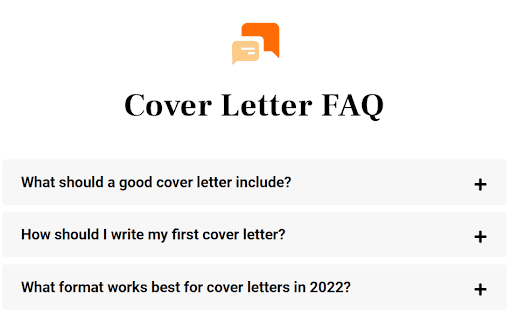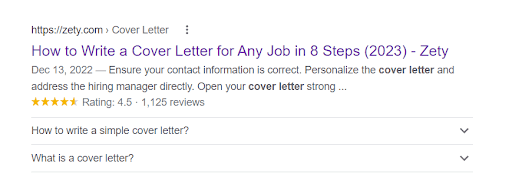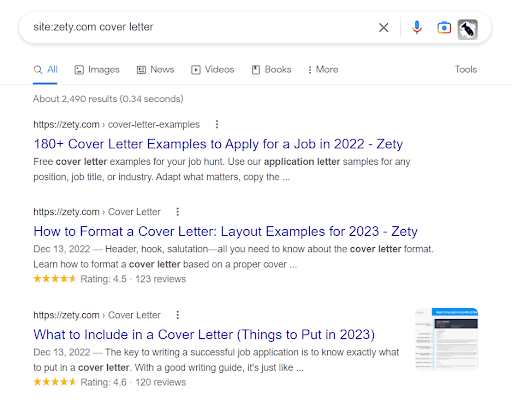Sooner or later content of any blog becomes obsolete. Even if the topics for the posts were chosen wisely and remain actual, competitors continue writing about these areas and their publication dates are later and the content is fresher. In addition, time flies, and analysis results as well as descriptions and advice may get outdated. Sometimes, it is enough to add minor details to a blog entry to revitalize it. In other cases, improving SEO for the website can be reached by re-optimizing the content already published.
In this article, we offer some hints about how to efficiently refresh the old content of your website, how to update existing blog posts and improve their search visibility. It is explained, when to update content, how to update website content for SEO, and why to do that at all. Follow the suggested steps to get a fresh SEO look at your existing website and get inspired for a content upgrade resulting in a much better ranking.
Table of Contents
- Why Is It Important To Update Old Content?
- Useful Tips on How to Refresh Old Content and Improve SEO
-- Find the content to update
-- Collect the keywords
-- Analyze the competitors
-- Update title and descriptions
-- Improve headlines
-- Update your content that satisfies search intent
-- Update the post date
-- Update images
-- Add F.A.Q. section
-- Add internal links
-- Last checks before posting
-- Don’t forget to keep the old URL
-- Start promoting your updated page from scratch
-- Determine the required update frequency
- Conclusion
Why Is It Important to Update Old Content?
Content refresh is an important SEO task involving updating website content regularly. It refers to finding irrelevant or obsolete content on the website and rewriting it so that it addresses the search intent better. Examples of major and minor improvements include improving and updating statistical and numeric data, sharing the latest knowledge, adding quotes and examples, using cases and stories from own experience, improving visualization and structure, etc. After the content is updated, SEO specialists should ensure that search engines agree that the article remains an authoritative source for that search query and not a worse copy of the originally indexed content. Interestingly, if the correct sequence of steps is followed, search engines like Google recognize the efforts and reward regularly updated website content with good visibility.
There is a number of reasons why website owners should update old online content from time to time. Here are the most obvious ones:
User experience. Obsolete web pages of a website or a blog are usually about broken links, outdated statistics and images, old visualization style, and irrelevant information. In addition, an old publication date itself may be a stop factor that prevents you from retaining your webpage visitors.
Competition. If a person searches for certain information, among all competitors owning similar content, they will most probably choose in favor of more recently published data and prefer webpages that look fresher and more actual. People definitely prefer the most relevant information for their search query and will tend to click on today’s article title compared to one written several years ago. In addition, websites addressing the initial search intent better (we will discuss what search intent is a bit later in this article) are usually preferred by users over their direct competitors. So, it makes sense to reconsider the quality of material shared from time to time.
SEO optimization. Obsolete content may be the reason for the low ranking of this webpage and your total website ranking as well. Websites that are not getting fresh content regularly just routinely go down in search results until disappear because their competitors address the same search queries with much later and fresher articles.
The indirect impact such as reputation. If you never update your content, your market reputation may suffer. Establishing yourself as an industry authority, emphasizing current proficiency and knowledgeableness, and demonstrating attentiveness to detail (as an indirect sign of the high quality of all the services you sell) - all this requires continuous work on your content, ensuring that descriptions, recommendations, advice, and analytics are trustworthy and genuine and concrete.
Useful Tips How to Refresh Old Content and Improve SEO
So, how to update your old content? A simple algorithm to approach the content refresh project starts from finding the content to update and collecting the keywords for each article, competitor analysis, and only then the content can be updated in a number of ways, from title and description, images, headlines, and internal links and up to adding FAQ section and some other tricks to improve the webpage ranking.
Find the content to update
First, search articles via Google Search Console and/or utilize dedicated SEO services as well as using SERP checkers. Check if the keywords are present on the webpage. If they are absent, we will add these keywords. The main goal is to improve the resulting webpage ranking.
Secondly, browse your website for the so-called Evergreen Content - these are the articles that always remain topical but need some polishing and updating from year to year. Thirdly, analyze the web pages which are ranked low or are underperforming. The goal is to improve visibility and prevent the webpage from moving to the very bottom of search results for the key search phrases.
Collect the keywords
Even though you most probably already did this before writing the initial article but repeat the routine and collect the keywords once again. Mind both the top-ranked key phrases and
Mind keyword clustering as a wise approach to grouping the search queries during analysis as well as use low search volume keywords and remember to benefit from focusing on long tail keyword queries. The better you will complete this step, the more chances you will have to improve the keywords position of your website.
Analyze the competitors
Use the usual SEO analysis of competitors to get inspired for the keywords, catching article titles, and missing tooling/widgets and content categories. Spot the areas which you miss or where you lack SEO efficiency compared to competitors.
Update title and description
The title and description can be improved by inserting keywords, making them more eye-catching or selling. Use the hook approach and interest your audience. Leave intrigue in the description to encourage opening the full text. In addition, mind the technical updates. For example, you can replace 2022 with 2023 and add the SEO long tail keywords to better address the low-volume search queries.
Improve headlines
Not every website UI design includes proper space for the article headlines but we recommend having them and revising them from time to time. The purpose of headlines is not only to summarize the content associated with the title but also to grasp attention, call for action to open the article or to continue reading it, and help the visitor focus and feel interested in the information offered. Often, a headline is a trial taste of what is coming next. Even if you don’t use this part for the keywords, mind the marketing effect and get most of the first impression you are making here.
Update your content that satisfies search intent
The worst mistake an SEO specialist can only make is optimizing an article for a keyword combination that does not correspond to the initial search intent of the user’s query. The search intent is the true reason behind a user’s search behavior. This is a WHY to search, not `WHAT to search as the keyword phrase itself.
Search intent can be different:
Informational intent is when a user is looking for information/knowledge only.
Navigational intent is when a user knows where they need to but types a search query instead of a URL to simplify navigation.
Transactional intent is when a user is ready to make a purchase (e.g. to finalize an e-com transaction) but is searching for the right place/provider to do that.
Lastly, commercial intent means the user wants to buy something but is not fully sure what.
In order to understand the search intent behind a search query, use SERP analysis and discover how the top-ranking websites interpret and address the interested keywords to transform them into interest or a call to action. Please pay attention to the form of addressing the search query, too. For example, if a search phrase results in a list of videos prepare a webpage with a video, too, if images are mostly displayed, ensure that the webpage contains a sufficient number of optimized pictures that are properly indexed. One of the recommended tools for such analysis is SpySERP’s SERP Checker allowing us to compare search results from different search engines such as Google vs Bing as well as from mobile vs desktop versions and much more. Don’t forget to apply the knowledge gained to the article being updated.
Update the post date
Updating the post date itself is a small but very important technical detail needed before posting the article. It affects trust, interest, and perceived actuality of the article published. A fresh article looks more trustworthy and interesting. A blog full of freshly updated articles looks alive to the user. In other words, this detail becomes an indirect sign that the business is active, up and running.
Update images
Update and/or add new images with new statistics - for example, for the 2022 year that passed if you change a 2022 article to 2023. Fresh images may also contain new trends that appeared. Don’t forget to use alts and titles which include keywords that you have chosen for the article’s SEO optimization. Yet, don’t use irrelevant ones. The main rule is that alt has to contain words that are displayed on the image.
Add F.A.Q. section
It is very much recommended to add an FAQ section to your website and/or answer the “people also ask” questions. This is a very popular SEO tool today and an efficient one. For any website which is close to the top rank, the FAQ block will allow getting to the top because Google favors the widget. This is how an FAQ block looks like on the website:

And this is how it looks as displayed by Google search results afterward:

In order to find questions for the FAQ section, we recommend applying all of the below approaches:
Check the semantic core search queries. Get assisted by such services as Serpstat, and Ahrefs.
Enjoy the assistance from the AlsoAsked service.
Use the “People also ask” search:

Gather all search queries which your website is already being found with.
Analyze competitors’ search visibility, too.
Of course, prepare an extensive and clear but also brief and useful answer to each question you have prepared. Lastly, when your FAQ block with questions, optimize it quickly and effortlessly using the online service called Merkle’s Schema Markup Generator.
Add internal links
Updating old blog posts necessarily involves improved interlinking. Although creating links is an ordinary task for every SEO specialist, here is once again a checklist to follow:
Enrich your content with both internal and external links. Interlinking between your articles will not only help with optimization but also improve website navigation and suggest to the user other valuable content and products or services you offer.
Mind adjusting your website’s CSS style and design if phrases with links are not easily distinguishable from the rest of the text. It should be clear to the user that each link is clickable.
Don’t use anchors like here, read, or more. Use only for the cases like “you can read more detail about content plan creation here.”
Forget about inserting just 2-3 links from other websites. If you want to obtain really impressive results, create 10-30 high-quality links with the proper keywords.
How to find a list of web pages which should be used to add links? You can use the operator “site:domain.com keywords” inserted into the Google search field where domain.com is the address of your website. This will allow you to find a considerable number of relevant web pages.

Last checks before posting
Your last checks before posting the updated content should necessarily include the use of plagiarism checkers. The content should remain original, and it is a common situation when somebody already copied and published a large part of your old article and helped the webpage rank even higher. Here, it means your plagiarism checks might indicate non-original parts which need to be rewritten before publishing.
Don’t forget to keep the old URL
If you update old blog posts which have been indexed and referred to before, don’t forget to keep the old URL. Actually, there are two major approaches how to deal with URLs while updating old content SEO:
First approach: If your webpage is pretty old, i.e. it exists for a long time already, has been optimized and interlinked before, and was visible and searchable by users, and especially if it is ranked pretty well, it’s best to keep the current URL unchanged.
Second approach: This strategy is good if you are updating an existing article about 2022 smartphone trends or about 2020 smartphone models, where the content is no more unique as people copy-paste the material around the Internet, and you want to create a blog post about TOP 2023 smartphones instead. Then you need to use a fully new URL for the updated article, which contains 2023 and the most critical keywords for top ranking as well as to set up 301 redirects from the old URLs to the new URL. It will allow to transfer of the old webpages’ ranks to the new ones, because they have their own backlink value but not much search usability value for the end-user, and help it get a better final search visibility.
Universal Advise: Use Google Indexing plugins to speed up re-indexing of the web pages you have updated.
Start promoting your updated page from scratch
After republishing old blog posts, mind starting promoting them from scratch. Remember that while some of your upgraded web pages got only minor updates, others were rewritten to some degree and might contain new valuable material, which is worth referencing. In addition, changing a title and re-considering the search intent potential of the webpage underlines the need to promote it for a new list of keywords.
Traditionally, we recommend going to Quora and other Q&A sites and creating answers with links to the newly re-published webpage. Other SEO tactics and small tips for refreshed content promotion are the same as for regular article optimization.
New web pages also deserve a better CTR. We recommend using a trusted tool to increase CTR with the help of a featured snippet.
Determine the required update frequency
Updating old blog posts should become a regular SEO task, but how should we know how frequently to reconsider the already-published content? Again, SERP reports can be useful here. Use the SERP Freshness section of your search intent report to get an understanding of whether this search intent keywords group belongs to the very frequent, frequent, moderate, or rare frequency category of refresh requirements.
Conclusion
In this article, we have discussed the benefits of republishing website content. Updating the content of the website should become a regular and planned routine that should not be omitted.
To sum up, the above-explained hints, updating content SEO is an important task that you should mind to both sustain your market reputation as a knowledgeable and professional market participant and to keep your online visibility high. In addition, topical content improves user experience and supports visitor retention. Helpful content updates will always be appreciated by your customers.
Before updating your old blog posts and webpages, do a proper analysis job related to SEO. Mind making optimization decisions first, and only then move to update the text and the visuals. While some elements should always look fresh (e.g. statistical data), others should be retained wisely (existing webpage URL) if already contributing to ranking. Remember to set up redirects and use extra tools to speed up the re-indexing of the republished content.





